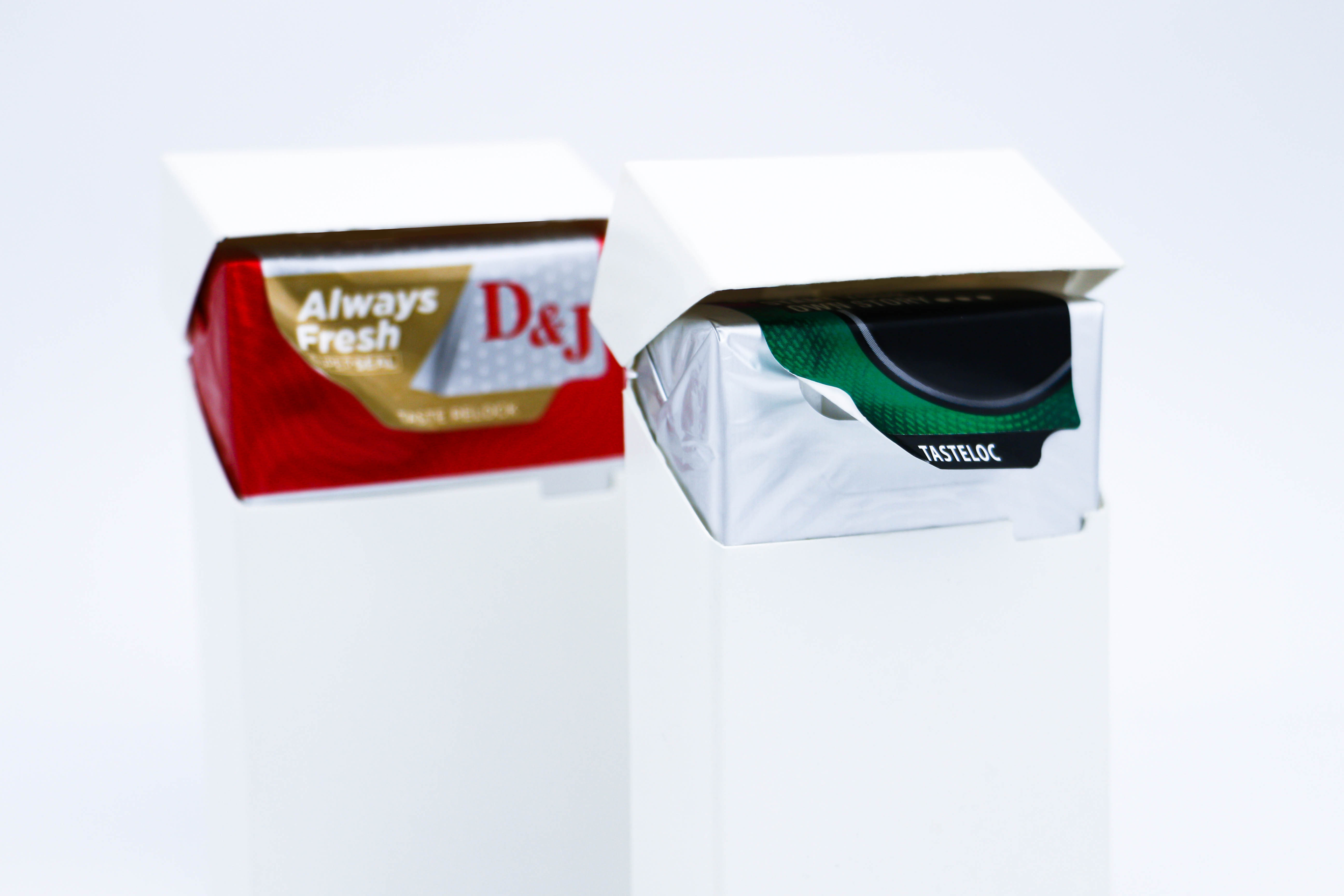1. Printing Ink Rubbing Off
Poor Surface Coating: Film materials have low surface tension and require coating before becoming pressure sensitive label substrates. Poor coating can lead to ink rubbing off, often characterized by large-scale ink loss, especially during tape testing where surface ink is extensively removed. Solutions include replacing the substrate with a qualified one from the supplier or applying an additional primer coat by the printer, albeit at an increased cost.
Incompatible Ink and Material: In this case, ink loss typically appears as patches or scattered areas. If material replacement is not feasible due to cost or customer requirements, the printer can collaborate with the ink supplier to find a compatible ink. Additionally, the printer can take auxiliary measures like pre-treating the material with corona treatment.
Poor Corona Treatment: Film material ink loss is related to surface energy, with stronger surface energy leading to better ink adhesion. However, corona treatment effectiveness diminishes over time, potentially causing ink loss during printing. This issue is commonly observed with cheaper BOPP and PE materials. Re-corona treatment by the manufacturer or supplier before printing can mitigate this problem.
Inadequate UV Drying: Many pressure sensitive label materials use UV ink, and incomplete drying can result in ink loss. This issue manifests as ink loss in one or two colors, which can be resolved by increasing the UV lamp power or replacing the UV lamp tubes.

2. Incomplete Printing, Fuzziness, and White Spots
Poor Surface Flatness of Material: While film materials generally have better surface flatness than paper materials, some specialty materials like thermal-sensitive synthetic paper with a rough thermal-sensitive coating can cause incomplete printing and fuzziness. This is due to the uneven coating, which appears as densely packed white dots under magnification. Applying a primer ink coat on the material surface can improve flatness.
Dust: Dust on the material surface can cause white spots during printing. Common sources of dust include debris from slitting or powder from the material itself. White spots are typically sparse but larger, and they tend to accumulate over time. Adding a dust removal cloth before the printing unit can help, and for stringent requirements or large solid areas, a primer ink coat before the first color can prevent white spots.
Printing Pressure: Printing pressure directly affects print quality. Excessive pressure can distort graphics, while insufficient pressure can result in incomplete or fuzzy printing. Regular incomplete printing can be resolved by increasing the printing pressure.
3. Significant Color Difference in Printing
Color Difference in Film Substrate: Color variation between different batches of film substrates is inevitable, and the reflection of light after printing makes the color difference more apparent. The only solution is to replace the material. Perfectly color-matched film materials do not exist, so it's crucial to establish the upper and lower limits of label colors with the customer and confirm the acceptable color difference range during new product development.
Difference in Ink Absorption of Substrate Surface: Color variation can also occur within the same batch of film materials due to inconsistent surface energy, affecting ink absorption. Printed materials with color variation exhibit different dot sizes on the surface. While a primer coat can be applied, the fundamental issue with the raw material still needs to be addressed.
Difference in Substrate Flatness: Substrate flatness directly impacts the reproduction of printing dots, potentially causing color variation. This issue results in obvious dot size differences and requires a primer ink coat. If the issue persists, material replacement should be considered.

4. Poor Registration in Printing
Printing Tension Setting Issues: Printing tension directly affects registration accuracy in film materials. Insufficient tension can cause material relaxation and registration errors, while excessive tension can deform the film, also affecting registration. When printing film-based pressure sensitive labels, printing tension should be set to the minimum value that ensures accurate registration.
High UV Lamp Temperature: Film materials are sensitive to temperature, and excessive UV lamp temperature during printing can deform the material, affecting registration accuracy. Lowering the UV lamp power to reduce temperature can help. However, this often creates a dilemma: high UV lamp power leads to material deformation and poor registration, while lower power results in accurate registration but slower ink drying. Comprehensive solutions are needed, such as applying a primer coat, choosing ink suitable for the material, or adjusting the printing sequence to print less drying-resistant ink first.
Poor Slitting of Material: Irregular material edges can cause registration shift during printing. If the material width is sufficient, a second slitting can be performed, removing 2mm from each side. Otherwise, material replacement is necessary.
Inconsistent Material Tension: Film materials are sensitive to tension, and inconsistent tension at both ends can cause shifting during printing, leading to poor registration. This often results in a "lotus leaf" effect where one side is flat and the other is tight. Using a continuous feed printing machine with a correction device is recommended to minimize registration issues.
Material Thickness Error: Deviations in the amount of adhesive applied during the coating process can cause inconsistent material thickness, resulting in printing shift and affecting registration accuracy. Material replacement or reducing the material size for use are potential solutions.
5. Die-Cutting Overflow Glue
Excessive or Soft Adhesive: Hard adhesive reduces the risk of overflow but decreases flow-ability and adhesion, while soft adhesive is more prone to overflow. The typical adhesive coating amount for film-based pressure sensitive labels is 16g/m², and excess can lead to overflow. Careful selection of materials with appropriate adhesive properties is crucial.
Excessive Winding Tension: The weak bonding between film materials and adhesive makes them susceptible to label edge overflow when excessive winding tension is applied. Reducing winding tension is necessary.
Die Cutting Knife Issues: Overflow on one or two sides of the label is often caused by the die cutting knife, such as severe wear in certain areas. Replacing the die cutting knife is the solution.

-

Shiner Presents at World Tobacco Middle East 2025
On November 11, 2025, our international marketing team participated in the World Tobacco Middle East 2025 exhibition (Booth T186) in Dubai, engaging in in-depth exchanges with global tobacco industry partners and exploring business opportunities. We also presented Chinese gifts.

2025-11-12
-

Contact Us
Hi-Tech Zone, Hainan, China
Email:zhuhaiyan@shinerinc.com
Tel: +86-0898-6858 1104
Fax:+86-0898-6858 5861


